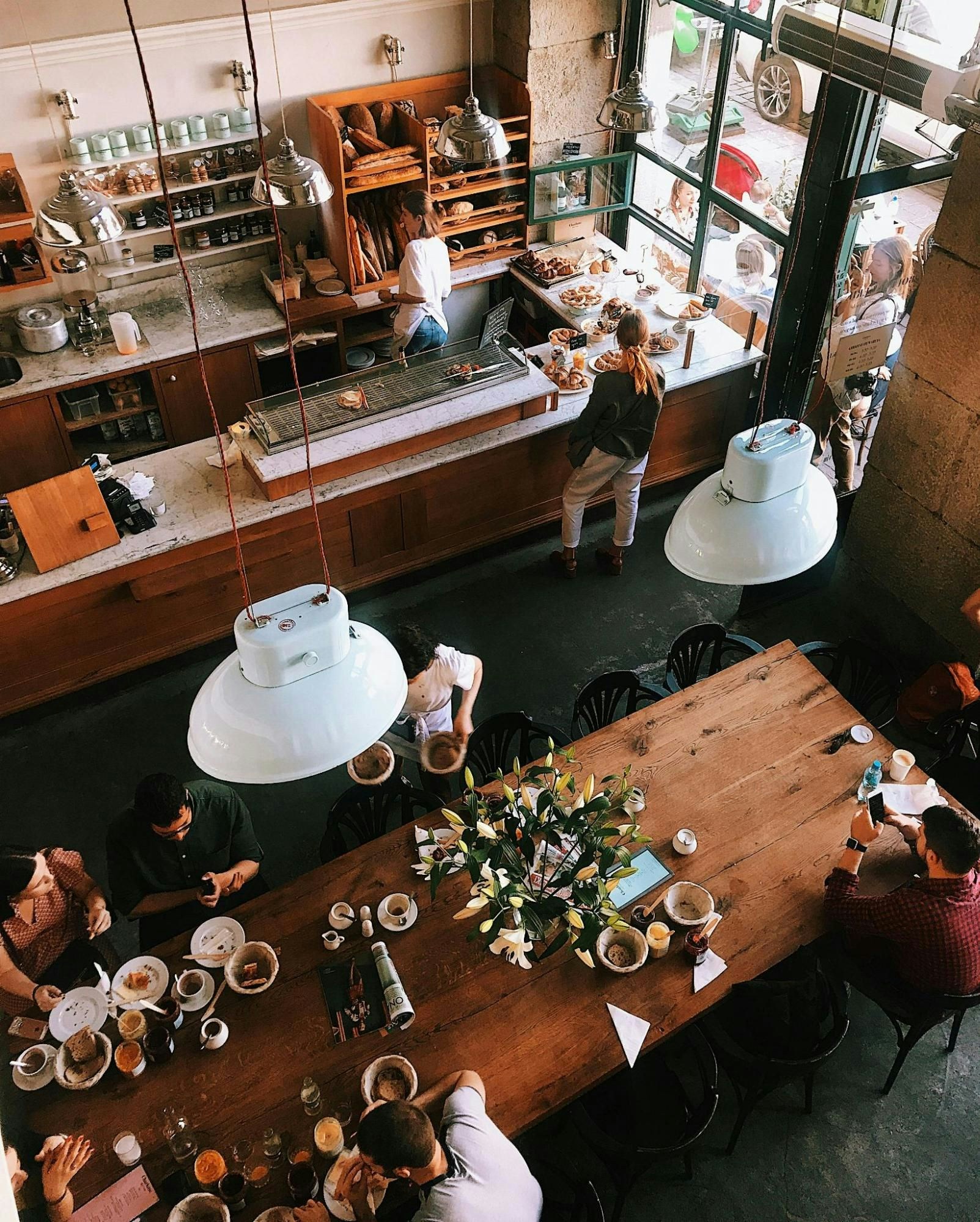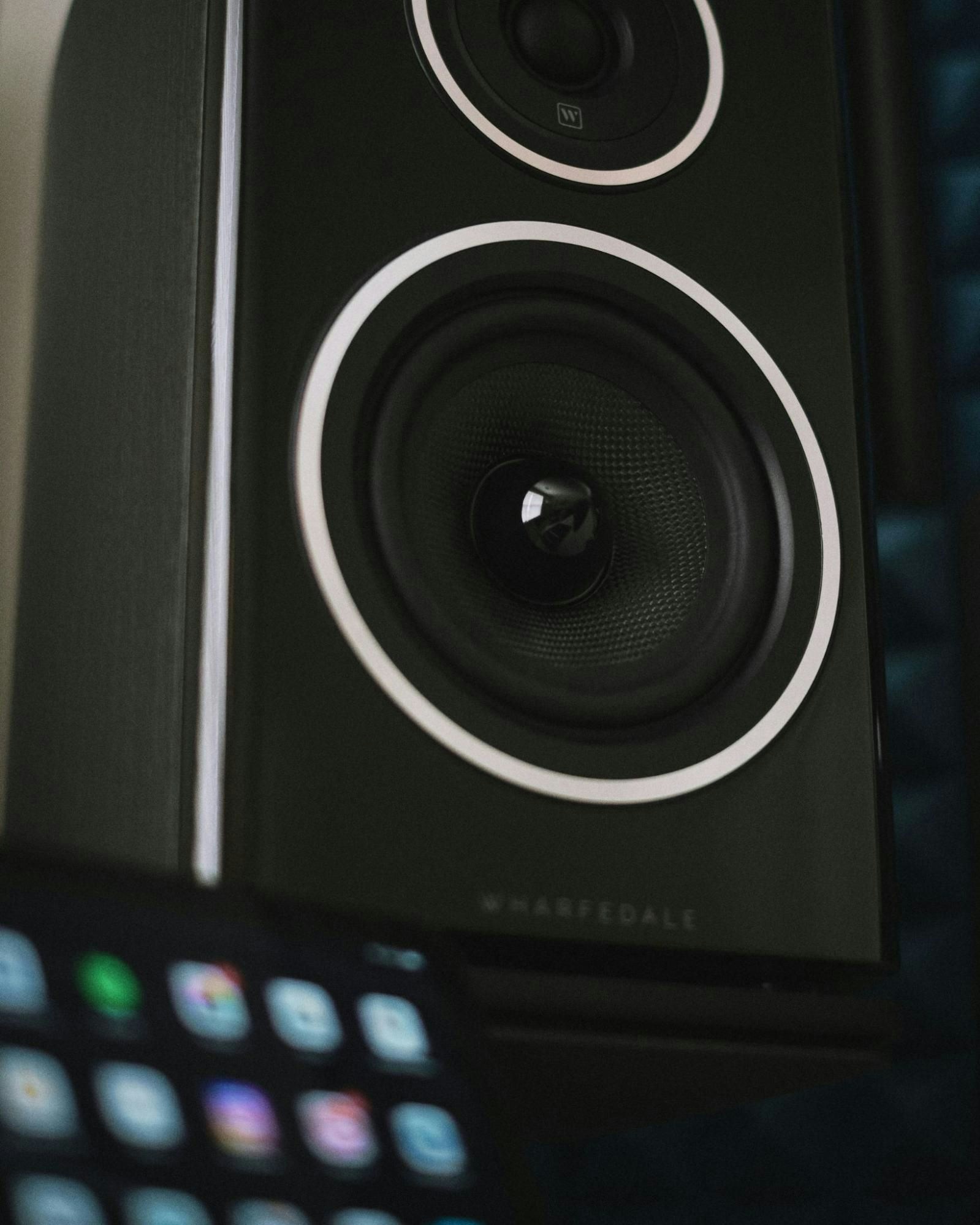Blog
Bar Profit Margins: 8 Tips to Boost Your Bottom Line

People will always enjoy going out for a drink with their friends at the local pub, but as a business owner, you need to be on top of new trends and consumer patterns if you want to stand out from the competition. In 2021, bars and pubs reached a market size of $22.91 billion in the United States, and the growth is expected to keep going. If you want to take advantage of the ongoing momentum in 2023-24, you’ll need to understand what’s driving it and how to analyze your bottom line.
But even though bars and nightclubs are performing well across the board, individual businesses in this industry may still struggle. If you aren’t sure how your bar’s profitability compares to the average profit margins for bars, you’ll need to know how to calculate your net profit margin.
And if you’re falling behind, refreshing your bar’s music and creating your soundtrack is one of the best ways to make a big difference in how much your patrons spend. The music you play can bring them in more often, make them stay later, and even influence how much they eat and drink. With the right soundtrack and a few other simple tricks, you can operate a profitable bar today and set your business up for success tomorrow.
Posted on January 25, 2024
What is your profit margin?
Understanding your profit margin is an essential part of running any successful business, so you’ll want to have a firm grasp on this concept if you don’t already. In simple terms, your bar’s profit margin is how much profit it makes on each dollar after deducting expenses. Let’s take a look at two different profit margin types you should understand:
Gross Profit Margin
If you’re looking for a quick overview of your bar’s profitability, finding your gross profit margin can help. This number simply expresses the profit left after subtracting your bar’s cost of goods sold (COGS) from its total revenue as a percentage.
Net Profit Margin
Net profit margin also involves subtracting your COGS from your total sales. However, you’ll also need to remove your operating expenses to determine this percentage, making it a more meaningful measurement of your business’s profitability.
How to Calculate the Profit Margin of Your Bar
Do you already know your bar’s net income and revenue? If so, calculating your bar margin is as simple as dividing the former number by the latter and multiplying the result by 100. That’s your bar’s net profit margin as a percentage.
This formula will also help you determine your bar’s pour cost, which is just the “flipside” of your profit margin. For example, if you have a pub margin of 80%, your pour cost will be 20%.
What Is the Average Profit Margin for a Bar?
Profit margins for bars and restaurants depend on countless factors, from the competition these businesses face to the weather in their area. Because of that, you won’t be able to forecast your profit margins with 100% accuracy—but bar owners can still get a rough idea of what to expect from their day-to-day profit margins.
Average Bar Profit Margins
As a rule of thumb, bar owners can expect their net profit margins to fall between 10-15%. Of course, that number isn’t set in stone. Depending on the type of bar you operate, where your bar is located, and the alcohol your business serves, your profit margin could be significantly higher or lower.
Wine Bar Profit Margins
Wine has a higher pour cost than other types of alcohol, and that translates to slightly smaller profit margins for businesses focusing on wine sales. Wine bar owners can expect to see a net profit margin of 7-10% from these establishments. The good news is that wine bars tend to have fewer overhead expenses—and that businesses in this niche can give their profit margins a boost by branching into retail.
Nightclub Profit Margins
Nightclubs tend to sell a lot of alcohol, and they often charge for entry and other services. Because of that, these businesses are typically on the higher end in terms of bar profit margins—they can bring in a net profit margin of 15% or more.
Pub Profit Margins
A pub’s profit margin can vary significantly depending on whether or not it serves food. The profit margin of food is lower than the profit margin of alcohol due to the lower markups involved and the costs associated with food preparation, so pubs with a full menu can anticipate average profit margins of 7-10%. Meanwhile, pubs that don’t have to deal with food costs should see profit margins that are very similar to the industry-wide average.
The Costs of Owning a Bar
By now, you’ve learned what profit margins are, how to calculate them, and what level of profitability to expect from your business. Now, let’s take a look at some everyday expenses bar owners need to deal with, such as:
Cost of Goods Sold (COGS)
Your COGS is the total amount your business spends on things related to making and selling products. For bars, this number covers major expenses like alcohol and food, minor expenses like garnishes, and everything in between.
Operating Costs
Meanwhile, your bar’s operating costs include all the expenses associated with running it from one day to the next. COGS fall into this category, but the same is true for things like rent, licensing, maintenance, and marketing strategies.
Management Costs
In addition to costs tied to selling drinks and day-to-day bar operations, you’ll need to be ready for expenses related to the “behind-the-scenes” aspects of bar/restaurant management. That includes (but certainly isn’t limited to) paying professionals such as accountants, lawyers, and real estate agents to provide business-related services.
Staff Wages
Finally, your bar won’t be in business for long if you don’t pay people to work there. Labor costs in the form of wages are considered part of your operating costs, and so are perks like health insurance, paid time off, and other benefits.
8 Ways to Increase Your Bar’s Profit Margin
With such tight numbers, bar owners need to do everything they can to maximize their profit margin. Fortunately, there are a lot of effective strategies to make your pub environment the perfect place for patrons to throw back a few extra drinks with their friends.
Play the Right Music
You might not think a bar’s soundtrack is a key element of its customer experience, but you’d be surprised. Almost everyone visiting bars and pubs will notice the background music playing there, and 85.2% of patrons think it’s important for bars to play music they enjoy. Along with that, 40.8% of people will stay longer at businesses when they like the music playing there. And the longer these people stick around to enjoy a bar’s ambiance, the more drinks they’ll buy.
Music can also have a direct impact on your bar’s alcohol sales. Have you noticed that bars and clubs typically turn their background music up as the evening progresses? There’s a reason for that: scientific research shows that loud music causes people to drink more. On average, bar-goers order one more drink in noisy bars than they would at bars playing music at a normal volume.
However, a random selection of hits isn’t the right soundtrack for your bar—in fact, this would be worse for your bottom line than total silence! Instead, you’ll need a playlist that’s perfectly suited to your establishment, whether you’re running a high-end wine bar or a laid-back beach club.
Rethink Your Drink Prices
Sometimes, bars can safely do away with drinks that aren’t delivering in terms of profitability. But that’s not always the case—even if a drink isn’t exactly high-profit, it could be one of your signature cocktails or just too popular among your customer base to stop selling. If that’s the case, it’s time for you to think about repricing drinks.
The key to successfully revising menu prices is taking every ingredient into account. For alcohol, that means finding the cost of each bottle and dividing it by the ounces used in a given drink. But you’ll need to go further than that when pricing drinks—your menu engineering efforts should also account for mixers, garnishes, and the premium your ambiance provides.
Reduce Your Pour Cost
Minimizing your pour cost is one of the most significant steps you can take toward maximizing your bar revenue. By following the tips listed in this section, you can keep your liquor cost percentage to a minimum.
Standardize Your Menu
When you know precisely what drinks your customers will be able to order, you won’t just streamline your business—you’ll also find it much easier to reprice products and determine your most profitable drinks. To accomplish that, you’ll need to create a standard cocktail menu.
Try to Curb Bar Losses
It’s easy to assume the amount of product you use and the amount of product you sell will be identical, but that’s not always true. Although theft is a major source of inventory shrinkage for bars, it’s not the only issue bar owners have to deal with. Overpours, comped drinks, and broken glassware can all contribute to variance.
To prevent losses at your bar, you should train staff members to lower your risk of overpours. Along with that, you should always keep an eye on sales reports and stats like your pour costs and inventory usage. That way, you’ll be able to increase your profit margins and spot variance as soon as possible.
Upgrade Your Inventory Management
Along with the advice listed above, putting some extra effort into inventory management can help you maximize your bar’s profit margins. As part of that, you should focus on reducing your sitting inventory. By taking inventory every week or two, you’ll know exactly what you have in stock, making it easy to only buy what you actually need.
Sometimes, distributors offer discounts to bars that buy a predetermined percentage of a specific product. That might seem like an excellent way to save money—but to reach the discounts for these minimums, you might have to spend more than you usually would. You’ll need to use caution when weighing the benefits of deals like these.
Turn Your Staff Into Salespeople
After you’ve put together a drink menu and priced out every item you offer, you’ll understand what drinks are the best for your bottom line—and what drinks are less profitable than you’d hope. Once you’re armed with that information, you can pass it along to your bartenders and other members of your bar staff. That way, they’ll be able to promote drinks with a low pour cost to new customers and regulars who don’t already know what they want.
Add More Tables
It’s simple logic—the more people your bar can serve, the more money you could stand to bring in. Fortunately, you might not have to invest in a pricey expansion project to pursue this goal. If your bar has any empty space, investing in additional tables will allow you to serve additional patrons.
Bar Profit Margin FAQs
What Type of Bar Is Most Profitable?
While any bar can be profitable, some bars have lower pour costs than others. Wine bars and pubs that serve food have profit margins of 7-10%, nightclubs typically have net profit margins around 15%, and other bars fall somewhere in between.
How Much Does It Cost to Build a Bar?
Before you can turn your bar business plan into a reality, you’ll need access to a decent amount of funding. Between real estate, supplies, insurance, and wages, your overall costs will likely be anywhere between $100,000 and $850,000 (startup costs included). The exact cost of starting a bar will depend on several factors, including its location. Building a new bar will also cost more than renting/buying a space previously used for this purpose.
Maximize Pub Revenue With Soundtrack
Understanding how to use music to boost profit margins for bars is a vital part of successfully operating businesses in this category. By standardizing your menu, taking steps to mitigate inventory shrinkage, and picking the right soundtrack for your patrons, you can significantly improve your pub revenue—and reduce the stress associated with bar management.
Though your bar’s soundtrack may seem like an afterthought, playing the right background music is crucial for anyone trying to run a successful business. The genre and popularity of your musical accompaniment can directly affect your sales metrics. A well-curated playlist can actually get your patrons to stay longer, spend more, and have a better time while they’re doing it! But you’ll need more than just a jukebox to get the job done. Instead, you need Soundtrack.
No matter what type of bar business you operate, Soundtrack has a playlist that’s perfectly calibrated to meet your needs. And if you’d prefer to make your own playlists, you’re in luck! You can create custom playlists in our service to dial in your vibe or import existing Spotify playlists you love. Either way, you’ll be able to legally play the music you want thanks to our catalog of 100 million songs. To learn more about these benefits and others, start your free trial today!
Ready to get started?
See how Soundtrack works for you and your business. Get our most exclusive features with a no obligation 14 day trial, unlocking everything available in Soundtrack Unlimited.





